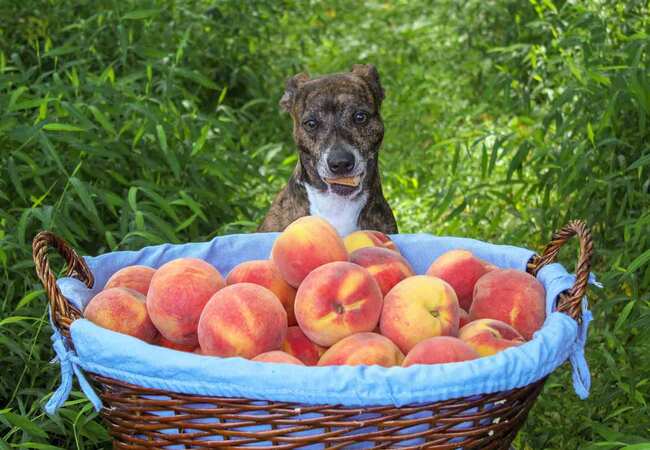Vet‑Approved 2025 Guide: Can Dogs Eat Peaches? Health Benefits, Risks & Safe Serving Tips 💉🐶🍑

In this article
Vet‑Approved 2025 Guide: Can Dogs Eat Peaches? Health Benefits, Risks & Safe Serving Tips 💉🐶🍑
By Dr. Duncan Houston BVSc
Peaches are juicy and delicious—but can our canine companions enjoy them too? In this detailed 2025 guide, Dr. Duncan Houston BVSc explains the nutritional perks, hidden dangers, safe serving methods, portion guidelines, and warning signs when sharing peaches with dogs. Our tips include strategies to minimize risks—like removing pits—and tools like Ask A Vet to support healthy, mindful feeding. 🐾✨
✅ Nutritional Benefits of Peaches
- Fiber-rich: Promotes digestive health and smooth bowel function.
- A & C vitamins: Support vision, skin, immunity.
- Antioxidants: Help neutralize free radicals and support overall cell health.
- Low in fats & calories: Ideal for a nutritious, guilt-free snack.
⚠️ Potential Risks to Know
While beneficial, peaches come with caveats:
- High sugar content: Excessive sugars can lead to weight gain, obesity, and diabetes.
- GI upset: Sudden fruit intake may cause diarrhea or vomiting, especially in sensitive pups.
- Pit danger: One of the major concerns—pits can cause choking, obstruction, or cyanide poisoning.
- Stone fruit hazards: Like nectarines and plums, pits present choking and toxicity risks.
🛡️ Pit Safety: Essential
Never feed whole peaches or leave pits within reach. Remove pits completely to eliminate choking, blockage, and cyanide concern. Opt for fresh or thoroughly drained canned peaches—no syrup or sugar.
🍽️ How to Serve Peaches Safely
- Wash and peel peaches to remove chemicals and prevent stomach irritation.
- Slice into approximately ½-inch cubes.
- Serve fresh or freeze for a cool summer treat.
- In multi-dog households, ensure each pup gets equal peach access—no free-for-all!
📏 Portion Guidelines by Size
Follow the 10% rule: treats—including peaches—should be ≤10% of daily calories. Use this chart as a guide:
- 2–20 lb dogs: 1–2 peach cubes
- 21–30 lb dogs: 2–3 cubes
- 31–50 lb dogs: 4–5 cubes
- 51–90 lb dogs: 5–7 cubes
- Over 90 lb: 7–10 cubes, max ½ peach
🕒 Observing Your Dog’s Reaction
After introducing peaches, monitor for:
- Any vomiting or diarrhea within 24 hrs
- Signs of allergy: itchiness, redness, facial swelling
- General mood or appetite changes
If symptoms persist, stop feeding peaches and schedule a vet check, or use Ask A Vet for remote advice.
🚫 Who Should Avoid Peaches?
- Dogs with diabetes, overweight, or pancreatitis.
- Young puppies—stick to vet-approved puppy foods.
- Pets with sensitive stomachs or chronic GI issues.
🐾 Smart Treat Alternatives
- Fresh apples, blueberries, and watermelon (seeded & peeled).
- Frozen plain yogurt peach pops—using plain yogurt safe for dogs.
- VOHC-approved dog treats are low in sugar.
🛠️ Vet‑Trusted Tools & Support
- Ask A Vet: Chat photos of reactions or ask for portion surveillance.
🏁 Final Thoughts
Peaches are a delicious, healthy treat when served correctly and cautiously. Remove pits, serve in small, supervised portions, and watch for GI changes. See them as an occasional delight—no more than 10% of treat calories. When in doubt, opt for vet-backed alternatives and consult with your clinic or Ask A Vet before adding new foods to your pup’s diet. Here’s to a happy, peachy-snacking summer! 🍑🐶❤️






